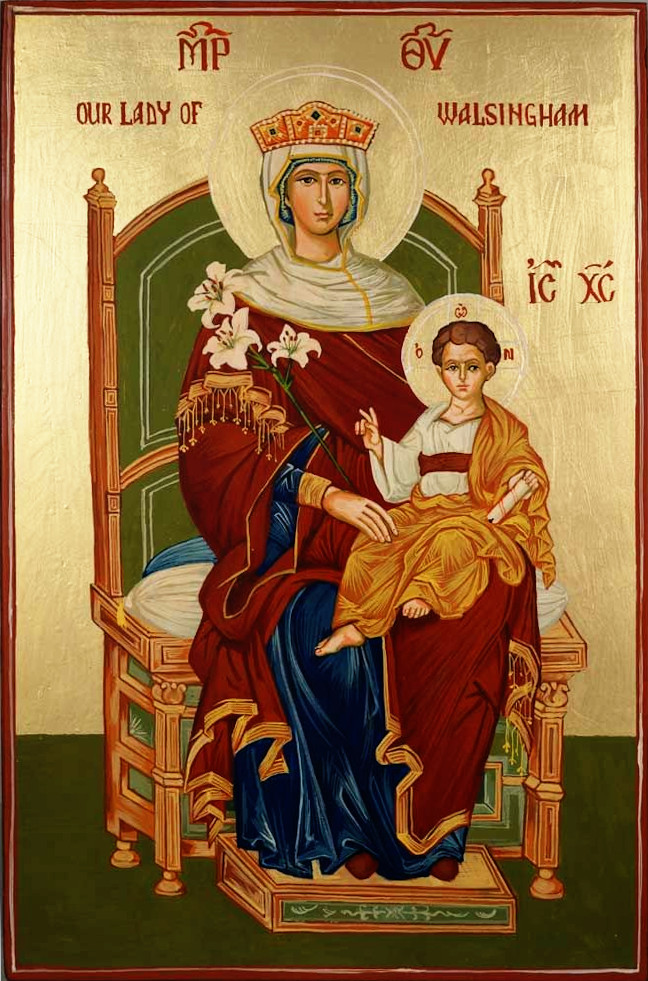In the wake of Labour Day – an occasion on which I called some much-deserved attention to the Carpathian Rusins who fought in the IWW and in the UMWA for the dignity of workers in their newfound homeland – it seems only too meet that the Orthodox Church (on the new calendar) should commemorate the glorification of a hard-working priest and martyr of that long-suffering people-without-a-state: Father Maksim Sandovich.
Maksim was born to Timko and Kristína Sandovich in the village of Zhdynya in the Carpathian Mountains (now in Poland, but then part of the Habsburg Monarchy of Austria-Hungary). Though Timko and his wife were farmers, they noticed that Maksim from a very early age had an aptitude for scholarship, and a sincere love of the Church and its prayers. Timko thus sent Maksim to be educated at a normal school in Gorlice, where he enrolled in Russian coursework – learning the Russian language, history, culture, and the history of the Orthodox Church in Russia. Though his parents were fairly well-to-do, the effort to put him through school strained their resources, and Maksim transferred to a monastic school in Kraków out of respect for his parents, not wishing to burden them. This was not, however, to his liking, and he soon left for Russia to enter a novitiate at the Lavra of the Dormition of the Holy Theotokos in Pochaev. The abbot at the Pochaev Lavra introduced the young Maksim to Metropolitan Antoniy (Khrapovitsky) of Kiev and Galicia, who oversaw the promising pupil’s education in the faith, and entered him into the seminary at Zhitomir.
He graduated from the seminary and was entreated by the villagers in his hometown to seek ordination and serve them as a priest. This he did; he was married to a Belarusian woman named Pelageya, and thereafter was ordained in Saint Petersburg in 1911. His sponsor, the good Metropolitan Antony, was aware of the growing persecutions of the Orthodox faithful in German-speaking countries, and told him that he would be welcome as a parish priest in Russia, but Father Maksim insisted on returning to his hometown and serving his own people, the Rusins of the Habsburg Monarchy.
Travelling back to Zhdynya from Zhitomir, he was not received kindly by the Poles who lived in the area. Seeing him in the long beard and cassock of the Orthodox clergy, they mocked him and said amongst themselves, ‘Look – Saint Nicholas has come to the Carpathians!’ His early priesthood would meet with many difficulties and trials: the German authorities refused to allow him to serve the Liturgy, and shut down the residence where he celebrated the Mysteries with his fellow Rusins. He moved to another house, but the Uniate priest nearby complained about the candle smoke, and the Germans arrested all the Rusins they could find who were holding candles, imprisoned them, and fined Father Maksim 400 crowns after a month’s confinement – but even then he did not give up serving the Liturgy or preaching among the Rusins.
The Austrians and the Uniates persecuted the Orthodox Rusins mercilessly, expropriating their cattle or throwing them into debtors’ prison when they could not pay. The Uniate priest Kiselevsky even hindered the burial of an elderly Orthodox woman who had died by having her grave filled in secretly at night before she could be interred, and then when the interment occurred, Kiselevsky and his Uniates disrespected the body by refusing to remove their caps, and blocked the Orthodox from entering the cemetery with the help of the German police. Still further persecutions continued. In the face of charges that he was a Russian spy, Father Maksim proclaimed simply, ‘My only politics is the Gospel’ – and for this answer he was imprisoned for nearly two months.
In the meantime, his mission in the Carpathians attracted more and more men and women from the countryside. It is to be remembered that the Unia was something imposed on the people from above, by city-based Jesuits and the Polish merchant class; in the countryside, many of the Rusins still maintained the Orthodox way even if they had to do so in secret. Among them, word of Father Maksim spread rapidly. So many parishioners filled his little chapel that he soon ran out of candles, and he and his wife had to make a special trip to L’vov to buy more candles and other supplies for the chapel, and to visit his old seminary-school friend Father Ignatius (Gudima). The Habsburg authorities planned to trap him on this trip: both Father Maksim and Father Ignatius were arrested on trumped-up charges of treason and espionage for the Russians. They were held in captivity for two years, while the Habsburg state built up its case against them with all manner of false witnesses and fabricated evidence. A panel of judges assembled to hear the capital case in 1914 failed to find proof of the two Orthodox priests’ espionage, and true witnesses were produced who attested to their innocence.
Father Maksim was released once more, but for all of six weeks. The First World War had erupted between Austria-Hungary and Russia, and immediately following the declaration of war the Austrian gendarmes began making mass arrests of suspected Russian sympathisers, with the help of Ukrainian informants. Father Maksim was one of the first people accused. On 4 August, the Germans arrested Father Maksim, his father Timko, and his pregnant wife Pelageya in their home, marched them to Gorlice and threw them into prison.
On 6 August, the Warden Kalchinsky and Captain Dietrich of Linz, along with four gendarmes and two Austrian militiamen, came for Father Maksim. They blindfolded him and bound his wrists, in spite of the saintly Father’s gentle protestations that they were not needful, and that he would go with them wherever they wished. The gendarmes paraded him before the crowd, but Father Maksim went with Christlike meekness to his end, praying to God. Captain Dietrich marked his cassock with chalk, then gave the signal. As he was shot, Father Maksim cried out: ‘Long live the Orthodox Rus’!’ But even though he had been mortally wounded, the martyred priest remained standing. Dietrich, panicking, drew a revolver and fired it three times into Father Maksim’s head, and then shoved him so that he would fall over. After the brutal summary execution, the gendarmes prepared a rough coffin and buried Father Maksim without any ceremony in an unmarked hole in Gorlice Cemetery. Only in 1922 would Timko Sandovich obtain permission from the new Polish government to disinter his son’s body and bury it properly in Zhdynya.
Father Saint Maksim’s memory was cherished by his fellow Rusins, even as the war dragged on and many of them, including his pregnant widow Pelageya, suffered in the Austrian concentration camp at Talerhof. Matushka Pelageya was fortunate; she survived the horrors of Talerhof and gave birth to Saint Maksim’s son, named in his father’s honour – who would become a priest later in his life and faithfully serve a growing, spiritually-thriving Rusin flock as his father had done. The Rusins still venerate Father Maksim, whose tireless efforts and steadfast endurance of persecution even to his death, mirroring the passions of Christ Our God, have continued to give them strength even in the most trying circumstances.
By the Providence of God you were sent to the Mountain of Pochaev
For the knowledge of the truth of the Orthodox faith,
And receiving true teaching in the city of Zhitomir,
As a soldier of Christ you came to our land.
For Orthodoxy and your own people you accepted a martyr's crown.
Therefore you confirmed your native land in Orthodoxy.
O Priest-Martyr Maksim, entreat Christ God that our souls may be saved!














No comments:
Post a Comment